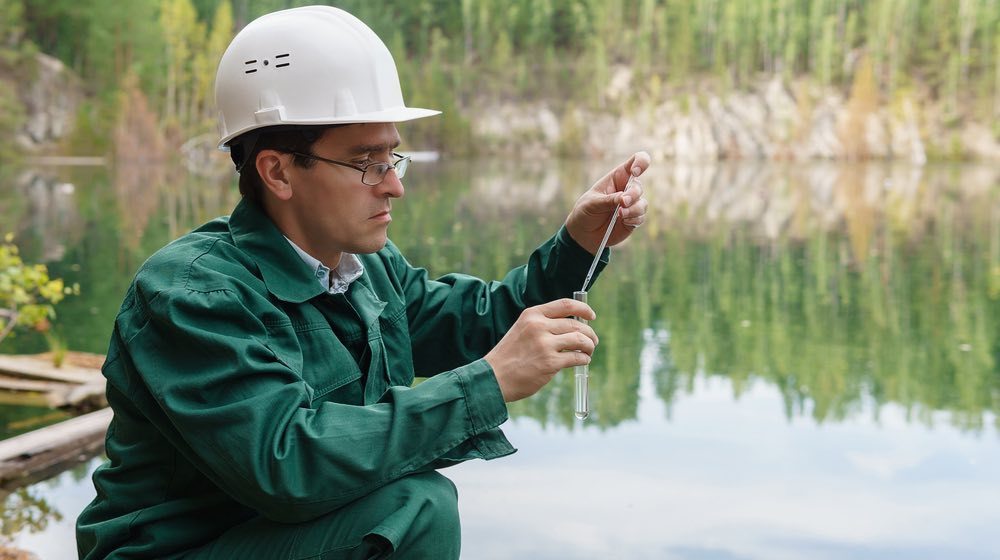Survival Skills
Non-Potable Water | Types and How to Spot Them | What You Need To Know
Published
3 years agoon

Knowing how to spot non-potable water is one of the many skills we need to master. This will ensure that our outdoor activities will not turn out a disaster.
We need to learn how to keep ourselves and our companions out of harm’s way when exploring areas we are not familiar with.
In this article:
- What Is Non-Potable Water?
- Non-Potable Water vs Potable Water
- Types of Non-Potable Water
- Health Effects of Drinking Non-Potable Water
- Symptoms of Non-Potable Water Consumption
- Diseases You Can Get from Drinking Non-Potable Water
RELATED: How To Make A DIY Water Filtration System In 5 Easy Steps
Non-Potable Water | What You Need to Know
— This post is courtesy of the Survival Life shared with permission —
What Is Non-Potable Water?

Heading to the great outdoors is an excellent way to de-stress and detach from the hustle and bustle of life, but heading out is not as simple as it sounds.
Knowing potable and non-potable water may not exactly be the first thing that comes to mind when preparing for outdoor activities.
However, this is crucial information we need to be aware of, especially given how the consumption of the wrong type of water can carry significant health risks.
Non-Potable Water vs Potable Water

Simply put, non-potable water is not fit for human consumption and is by nature usually harder to find compared to water that is safe to drink.
We cannot deny though that there are still people who may find differentiating non-potable and potable water a little tricky, more so outside the confines of their day-to-day.
With our heightened exposure to non-potable water when camping, hiking, or on any outdoor trip, all the more should we increase our knowledge about which water is safe to drink and use.
To help you understand this a little more, check out our list of the types of non-potable water that we probably encounter more than the others.
Types of Non-Potable Water
1. Rainwater

It may seem odd for some people how rainwater is non-potable, given that it directly comes from nature. Still, we also have to understand that the water cycle involves water evaporating from just about anywhere.
With this indiscriminate collection of water, especially with the existing water pollution issues, we need to consume water with care. If you need to drink rainwater on your outdoor trip, make sure you purify it first using iodine, chlorine, or simply boiling it.
2. Creek, Dam, & River Water

Since we are already on the topic of not immediately trusting anything you find in nature, we should also treat water bodies such as creeks, dams, and river waters the same way we treat non-potable water.
Like how rainwater needs to go through purification, so do the waters from these sources. Since they are exposed to other elements such as soil, rocks, and other particles, make sure you subject these waters to water filtration.
This will lessen the possibility of you ingesting any foreign objects.
3. Quarry Lakes

Often the result of deep-ground excavations or mining operations, quarry lakes are human-made pits that eventually become filled with water through either the collection of groundwater, rainwater, or both.
With that in mind, they may be toxic for humans, hence the need to avoid them altogether or at least make their water potable first before drinking.
4. Recycled Water

Also known as reclaimed water, this type of water is wastewater converted and treated to become reusable. Usually, from diverse sources such as residential homes or businesses, recycled water goes through sewer systems or wastewater treatment plants to become useful for their next intended purpose.
TIME SENSITIVE INFORMATION: EX-CIA Agent Takes You Through The Intensive Sharp Shooter Training He Learned In The CIA Academy. In Just 30 Days Learn To Be A Sharp Shooter Like Every Agent Leaving The Academy.
Though recycled water may be harder to find in the wild than the first few examples (since they are usually in secure facilities), you should think twice about consuming recycled water if you stumble upon it.
For this and all the other kinds of water you encounter, make sure that they have been treated first for human consumption.
RELATED: How To Build A Salt Water Distiller | Survival Life Guide
Health Effects of Drinking Non-Potable Water

There are many reasons why we are so particular about safety precautions for drinking water in the wild. One of which is the fact that every year, an estimated number of 829,000 people die from diarrhea just because of drinking unclean water.
If that’s not already bad enough, half of the world’s hospital beds are for people suffering from a water-related disease. Besides, being far away from civilization is already dangerous; being sick while in the wild can be life-threatening.
Before we tackle the effects of drinking non-potable water, here are signs to watch out for that can show that you may have consumed non-potable water.
If you ever experience these during your outdoor trip, find the means to be medically examined and treated as soon as possible.
Symptoms of Non-Potable Water Consumption
- Diarrhea
- Abdominal cramps
- Nausea
- Vomiting
- Fever
- Dehydration
Getting immediate help to address the symptoms mentioned can help you quickly detect other possibly more severe diseases. You would want to have them checked before they worsen.
To give you an idea, here are the usual conditions you can get from drinking dirty water.
Diseases You Can Get from Drinking Non-Potable Water

1. Cholera
A silent killer, cholera can kill a person within hours if left untreated. Most people do not notice this disease until it’s almost too late. This is why it’s important to watch out for the mentioned symptoms.
Symptoms particularly diarrhea, nausea, vomiting, and dehydration are common signs of cholera.
2. Cryptosporidiosis
This disease is due to microscopic parasites called cryptosporidium that is sometimes present in unclean water. You can suspect having this if you experience our listed symptoms above.
3. Dysentery
This type of gastroenteritis involves the inflammation of the intestine and can be fatal if left untreated. If you experience diarrhea with blood, you can suspect that you have probably contracted dysentery.
4. Giardiasis
Somewhat similar to cryptosporidiosis, ingestion of microscopic parasites causes giardiasis. The parasite called giardia can sometimes be found in dirty water. While it is rarely fatal, it can have lasting effects, especially on children.
Other symptoms apart from the mentioned ones can be itchy skin, hives, and swelling of the eyes and joints. This sometimes does not have symptoms at all, which makes it difficult to detect.
Want to see the full article?
Click here to read the full article on Survival Life.
Prevention is always better than needing to perform contingent actions. This makes preparation a vital part of any outdoor activity. Always be prepared to ensure that you and your companions are safe while enjoying the great outdoors.
Do you think you have the skills to check potable and non potable water anywhere? Please share with us your survival tips and tricks in the comments section below.
Up Next:
- 5 Emergency Water Storage Tips For Preppers Like You
- 10 Times Bear Grylls Proved He Was Awesome And Insane
- Everyone Should Learn These 25 Ingenious Camping Tips And Hacks NOW
Don’t forget to stay connected with us on Facebook, Twitter, and Instagram!
You may like

How To Build A Debris Hut

Ironman Triathlon Podcast: What You Need To Know As An Aspiring Ironman

Awesome Family Camping Tips For Beginners

Hiking Safety Tips: What To Do When You Have Knee Pain On Trail? [PODCAST]

How To Craft Sharp Stone Tools To Survive The Great Outdoors

Mountain Bikers, Why You Don’t Want to Ride Like a Pro!

Hiking Boot Accessories
The Handgun Safety Test For Beginners
These Hunting Shotguns Are The Best Bang For Your Buck
11 Types of Guns That Will Keep You Alive On Doomsday
Best ATV Tires – The Top 6 Lightest Mud Tires
Arizona Hunting Laws and Regulations

The Top 5 Hunting Guns You’ll Ever Need For A Wilderness Walk-out

Hunting And Conservation Discussion | Call Of The Outdoors Podcast [LISTEN]
The Handgun Safety Test For Beginners
These Hunting Shotguns Are The Best Bang For Your Buck
11 Types of Guns That Will Keep You Alive On Doomsday
Best ATV Tires – The Top 6 Lightest Mud Tires
Arizona Hunting Laws and Regulations

The Top 5 Hunting Guns You’ll Ever Need For A Wilderness Walk-out






